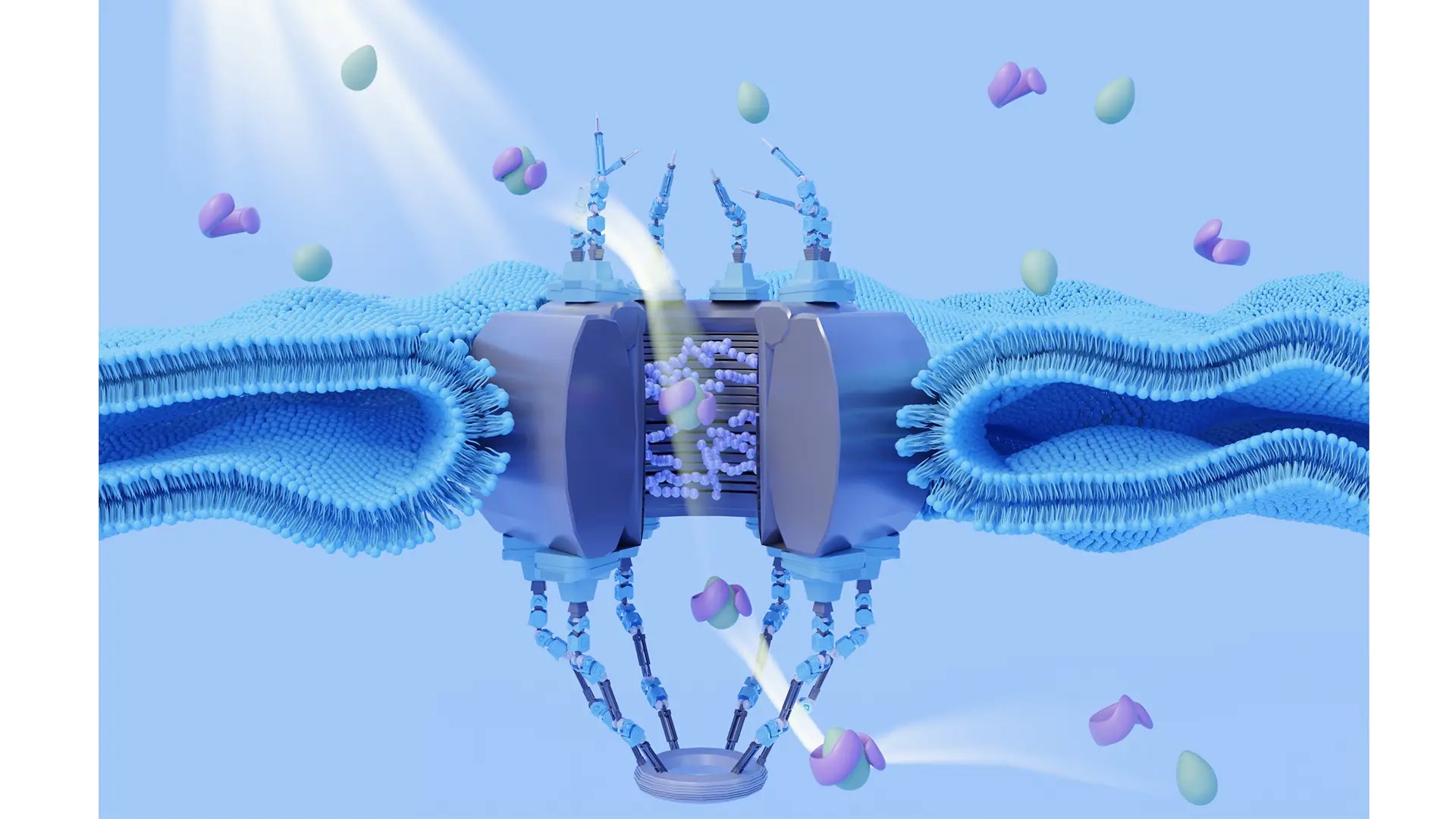
We work with functional nanostructures: In my group we fabricate new structures and functionalize them chemically in order to evaluate them for various applications. Our work is strongly interdisciplinary and we aim to develop new bioanalytical devices or synthetic biological systems on the nanoscale. We are also addressing fundamental scientific questions, for instance within supramolecular chemistry and polymer physics.
Molecular Trapping
A lot of our work relates to nanopores in one way or another. To put it simple, we work with very small holes. We are far from the only ones in the world working with nanopores, but our nanopores are quite different from those typically produced by other research groups. In particular, we use metallic layers to give the structures plasmonic resonances and we chemically modify our nanopores with polymers.
We are all used to having doors and rooms to locate people. We are interested in achieving the same thing but with molecules instead of people and on the nanoscale. This work is partly inspired by the highly specific nanoscale gates (doors) found in nature, such as the nuclear pore complex which controls what molecules are allowed to enter the nuclei of eucaryotic cells (where the DNA is stored). We are interested in making nanoscale gates that can be opened and closed by electric signals. This can be accomplished by using special polymers that undergo shape changes in response to changes in temperature or the chemical environment. Also, we try to make apertures that are "not quite" possible for the molecules to pass through spontaneously, so that we can use electrokinetic forces to squeeze them through on demand.
The dream scenario is to have a platform where one can trap biological molecules such as proteins
- at physiological conditions
- without tethering to a surface
- for long-term observations (at least minutes)
- with exact control of how many molecules that are confined
Especially the last point is currently not possible with any technology. The trapping platform would enable new possibilities in studies of intrinsically disordered proteins, protein aggregation and protein interactions. Our first publication on this topic recently came out:
Biopharmaceutical Purification
In this recently started project, we try to use polymer brushes for protein purification. The idea is based on our recent insights regarding how polymers interact with proteins and how this can be controlled by electrochemical potentials. We have recently filed a patent and launched a startup company which tries to commercialize the technology:
We are currently looking for funding to continue with more academic research on this topic, not only utilization of our findings so far.
Nuclear Pore Mimics
In the nuclear envelope surrounding the nucleus of eucaryotic cells, there exists a nanoscale machinery which selectively transports biomolecules in or out of the nucleus. The most remarkable thing about the barrier (in my opinion) is that the "cargo "molecules are transported via "shuttles" that move freely through the barrier. Even though the shuttle-cargo complex is larger than the cargo alone, it can pass the barrier, while the cargo cannot.
This project is mostly about fundamental science, aiming to obtain a better understanding of disordered macromolecules and their interactions. We have written a review paper on the topic:
